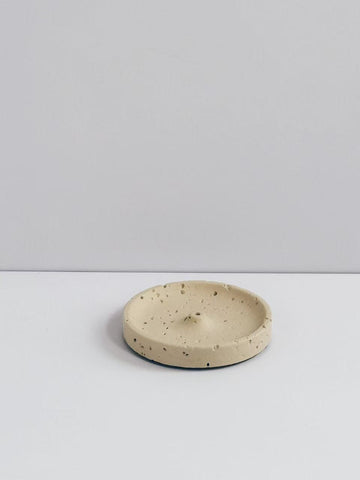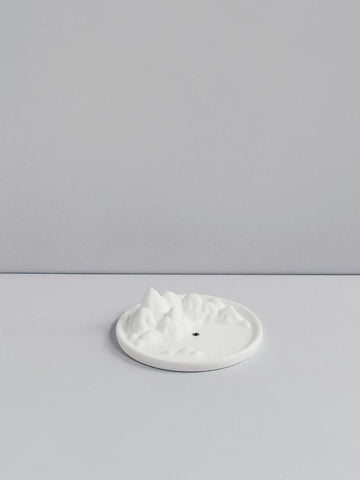Ambergris, often referred to as "floating gold," is one of the rarest and most fascinating substances used in perfumery and incense making. Known in Chinese as "龙涎香" (Lóngxiánxiāng), or sometimes as "dragon's belly scent," this elusive material has captivated civilizations for centuries. Its exotic aroma, unique formation process, and rarity have earned it legendary status across cultures.
The Origins of Ambergris
Ambergris is a waxy, solid substance that originates from the digestive system of the sperm whale (Physeter macrocephalus). Contrary to the misconception that it is found internally in hunted whales, most valuable ambergris is discovered washed up on beaches, having spent decades floating in the ocean. It begins as a fatty secretion within the whale’s intestines—produced to protect the digestive tract from sharp squid beaks and other hard materials.
After being expelled from the whale, ambergris floats in the sea for years, undergoing a slow transformation. The saltwater, sunlight, and microorganisms all contribute to a natural aging process, turning this raw, foul-smelling material into a highly prized aromatic compound. Initially black and sticky, over time it evolves into a dry, waxy, gray or pale white block that exudes a warm, earthy, marine aroma. The best quality—white ambergris—may have floated for more than 100 years before being discovered.
Appearance and Characteristics
Ambergris often resembles a dark brown or black lump of hardened resin, sometimes with multicolored patterns, and is opaque and waxy in texture. It has a distinctive sweet, earthy scent with oceanic undertones. Westerners often call it “gray amber” due to its color and fossil-like quality.
When burned, ambergris releases a deep, lingering aroma that can fill a room for hours. Its rare combination of sweetness and marine muskiness is almost impossible to replicate with synthetic substitutes, which is why even trace amounts in perfumes can elevate a fragrance to a luxurious level.
Historical and Cultural Significance
Ambergris has a long and storied history in various ancient cultures. In China, ambergris was discovered during the Han Dynasty, when fishermen found waxy, fragrant masses floating at sea. These mysterious clumps were brought to the emperor and used as both incense and medicine. In ancient Egypt and the Arab world, it was considered a sacred material used in rituals and elite ceremonies.
Textbooks such as the Chinese Bencao Gangmu (Compendium of Materia Medica) recorded ambergris as having healing properties, including aiding blood circulation, invigorating the kidneys, and relieving pain. It was used in traditional medicine to treat respiratory ailments, abdominal pain, and urinary blockages.
Ambergris in the Perfume Industry
In modern perfumery, ambergris is regarded as one of the most exquisite fixatives. A fixative is a substance that slows the evaporation of more volatile fragrance components, allowing the scent to last longer on the skin. To utilize ambergris, perfumers typically grind it into an ultra-fine powder, dissolve it in ethanol, and create a 5% tincture solution. This solution is then blended with essential oils and other ingredients to create high-end perfumes.
Just a small amount of ambergris can soften the harsh edges of other perfume ingredients, lending a warm, smooth, and sensuous finish to the blend. For this reason, many luxury fragrance houses use ambergris in their most premium collections. Its ability to enhance complexity and prolong longevity makes it irreplaceable in elite formulations.
Some of the world’s most famous perfumes, including Chanel No. 5 and Creed’s Aventus, were once known to use natural ambergris in their original compositions. Though synthetic alternatives now dominate the market due to ethical concerns and legal restrictions, genuine ambergris remains the holy grail of natural perfumery.
Ambergris in Incense and Aromatherapy
While ambergris is most famous for its role in perfumery, it also holds a special place in the world of incense. When used in incense sticks, even small amounts of ambergris essence can transform the entire experience. The scent is elegant, enduring, and deeply comforting—often described as “liquid gold for the senses.”
In the art of incense crafting, replicating the natural scent of ambergris has become a pursuit of the highest artisanship. High-end incense sticks that aim to capture its oceanic sweetness are rare and highly sought after by connoisseurs and collectors. The burn creates a complex olfactory experience that unfolds in layers, starting with a subtle marine freshness and evolving into a warm, musky base.
For example, this Ambergris Incense Sticks captures the essence of ambergris using a masterful blend of oils and natural resins. While not made from real ambergris due to its rarity and cost, it closely mimics the scent profile—offering a luxurious alternative that’s accessible and ethical. The aroma evokes the vastness of the ocean and the mystery of nature’s most aromatic treasure.
Value and Rarity
The high value of ambergris is not just due to its olfactory appeal. Its scarcity and the unpredictable nature of its collection make it one of the most expensive raw materials in the world—often priced on par with gold. A single lump found on a beach can weigh several kilograms and sell for tens of thousands of dollars, depending on quality.
Unlike other animal-derived substances such as musk, which often requires harming the source, ambergris is ethically collected from natural ocean drift. This adds to its appeal in today’s environmentally conscious and cruelty-free markets.
Chemical Composition and Therapeutic Effects
Scientific studies show that ambergris contains several organic compounds, including ambrein (its key fragrance component), calcium oxide, magnesium oxide, phosphorus pentoxide, and silicon dioxide. Ambrein, when oxidized, is what produces the material’s characteristic scent. These compounds also contribute to ambergris’s medicinal properties in traditional Eastern medicine.
Practitioners have used it to calm the nervous system, support respiratory function, and improve mental clarity. While modern medicine does not widely adopt these uses, they remain relevant in holistic and natural healing traditions.
Ambergris, A Timeless Elixir
Ambergris is more than a rare ingredient—it is a symbol of luxury, nature’s mystery, and cultural heritage. From ancient Chinese emperors to modern-day perfumers, its unique scent and qualities have stood the test of time. In incense, its influence persists as artisans strive to recreate its magic through natural blends and masterful craftsmanship.
Whether in a vintage perfume bottle or a handcrafted incense stick like the <Ambergris Incense Sticks , ambergris continues to inspire, calm, and enchant. To understand ambergris is to appreciate the hidden wonders of the ocean, the alchemy of scent, and the beauty of patience.








